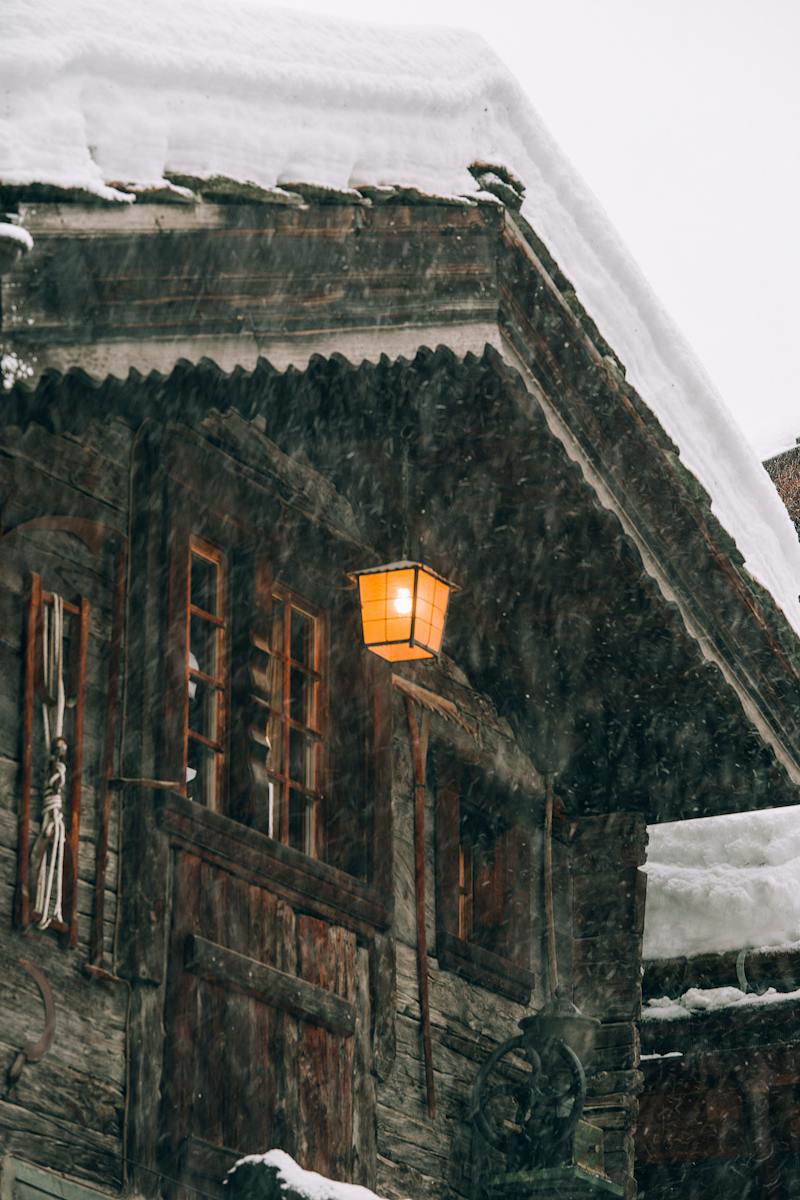|
Getting your Trinity Audio player ready...
|
The monsoon system of the Indian sub-continent differs considerably from that of the rest of Asia. The centres of action, air masses involved, and the mechanism of precipitation of the Indian monsoons are altogether different from other monsoon systems. Although pseudo-monsoons or monsoonal tendencies develop over other parts of the world, it is only around the Indian Ocean that monsoonal circulation in the true sense of the term is observed. Here, the mon- soons “appear as truly massive interruptions and reversal of the normal global atmospheric circulation.”
According to Byers, Indian monsoon is the ideal monsoon where differential heating of land and ocean subjected to the annual latitudinal ocle of the sun at its zenith gives rise to immense seasonal wind regimes. However, the mechanisms of Indian monsoons are not so simple as they are hought to be. G.B. Cressey has aptly remarked, “it has been well said that although every school boy understands the Indian monsoon, the official meteorological department is still in doubt as regards its origin”. The main reason for this very strong development of monsoons is the vast size of the Indian sub- tinent and adjacent seas. The very high and extensive mountain system of the Himalayas to the extreme north of the sub-continent is another favourable factor. The east-west alignment of this mountain chain forms a formidable physical urier between the tropical and polar air masses, which is of great
meteorological significance. Classical Theory (or Thermal Concept) of Indian Monsoon
The Indian monsoon signifies a marked seasonal reversal of wind direction hetween summer and winter. It is worthwhile to remember that all the special characteristics of monsoonal circulation over the sub-continent are explained by its topography. The high mountain chains of the Himalayas which border the subcontinent on three sides work as both a brake and a motor at the same time.” During the winter season it prevents the penetration of cold polar air masses from Siberia into the sub-continent. In summer it does not allow the equatorial maritime air masses to cross the Himalayas and forces them to curve round to north-west. The mighty Himalayas produce hydro-dynamic effects that determine the type of precipitation in India.
Summer monsoon: According to the thermal concept, during summer the intense heating of land results in the formation of a permanent thermally induced low in the north-western part of the subcontinent. This thermal low extends upto 700 mb level. Besides, during the high sun period the Intertropical Convergence Zone is displaced to the northern plains of India, sometimes reaching the Himalayas. On the contrary, there are high-pressure cells formed over the extensive areas of Indian Ocean and Arabian Sea. There being winter in Australia, a high pressure cell develops over there also.
During the hot, dry season (April-May) when temperatures rise rapidly and pressures over land decrease, the warm and moist air from over the adjacent seas starts blowing towards the above-mentioned low pressure centre. However, in the beginning the maritime air masses are drawn only from a short distance. But by the end of May or the first week of June, when the low pressure centre has fully developed, the pressure-gradient is steepened so that even the trade winds from the southern hemisphere are drawn towards the thermal low positioned in the northwestern region of the sub-continent. The southerly trades on crossing the equator are deflected to their right in accordance with Ferrel’s Law.
originally south-east trade winds become south-westerly blowing towards north- cast. It may be pointed out that with the apparent movement of the mid-day sun towards the north the doldrums also are displaced north of the equator. At the same time the intertropical convergence also shifts to about latitude 30°N
Related posts
- Widespread Rain and Snow Predicted over Jammu and Kashmir, Check detailed forecast
- JKSSB Police constable paper pdf online download
- Rain and Snow Predicted over Jammu and Kashmir, Read full advisory
- Latest Weather forecast for Jammu and Kashmir & Ladakh
- Rain and Snow Expected over Jammu and Kashmir During the next 24 hours
Southwesterly on-shore winds blowing towards the centre of low pressure over northern India traverse thousands of miles over the warm tropical occan They are, therefore, full of moisture and have a great potential for heavy precipitation. The south-west monsoon, as it is called in this region, is split into Two branches by the shape of Peninsular India. They are known as: (a) the Arabian Sea branch, and (b) the Bay of Bengal branch. Since these moisture laden summer winds in this region blow from south-west, the windward coasts get the maximum amount of monsoon rainfall. These on-shore winds by themselves are not capable of yielding precipitation which, as a matter of fact, results from a number of rain-making processes.
Arabian Sea branch: The Arabian Sea branch strikes the elevated Wester Ghats of India at almost right angles. The windward slopes of Western Ghats receive heavy orographic precipitation. However, the westerly current from the Arabian Sea continues its journey across the Indian Peninsula, but the amount of rainfall on the leeward side goes on diminishing with increasing distance from the sea coast. The Western Ghats have 100-250 cm of rainfall on their windward slopes, while there is a well-marked rain-shadow to the leeward. At Mahabaleshwar the rainfall amounts to 650 cm, while at Pachgani, only 16 km to the east, the amount of rainfall is reduced to 170 cm. The most characteristic feature of the distribution of rainfall on windward slope is that the amount of rains is heavier higher up the slopes. However, the heavy rains are confined in a narrow strip along the western slopes.
After crossing the Western Ghats the rain-bearing air currents descend the eastern slopes where they get warmed up adiabatically. This results in a pronounced rain shadow. Higher the mountains, larger is the rain shadow effect. Towards the north, where the Western Ghats are not very high, the difference in the amount of rainfall between the windward and leeward side is rather negligible.
A few air currents from the main Arabian Sea branch are diverted northward towards Cutch and Thar desert. These air currents continue their onward march upto Kashmir. In the absence of any barrier across their path, these currents do not yield precipitation in Rajasthan, which practically remains dry. The Aravallis being parallel to the direction of these monsoon currents fail to block their passage and lift them. That is why Rajasthan remains a desert. Here, it may be pointed out that the decreasing amount of rainfall from the Gulf of Cambay northward can be explained by two factors: (a) trajectory of air currents, and (b) dryness of the air mass of Sind. An east to west line drawn near Karachi in Pakistan practically marks the limit of monsoon rainfall. To the north of the line. the winds are dry and stable, whereas to the south the winds travelling over the Arabian Sea develop a high potential for heavy precipitation. The monsoon
currents heading towards Rajasthan are rather shallow and are superimposed by stable anticyclonic air. There is, therefore, little possibility of their uplift and consequent precipitation. In addition, the hot and dry continental air masses from the west and northwest are drawn towards the thermal low developed in this region. Because of their descent, such conditions as are unfavourable for precipitation are produced here.
Some of the air currents from the Arabian Sea branch manage to proceed towards Chhota Nagpur plateau through the Narbada and Tapti gaps. These air currents ultimately unite with the Bay of Bengal branch.
Bay of Bengal Branch. This branch flows up between Ceylon and Sumatra. A branch of this powerful current strikes the western coast of Burma where the windward slopes of the Arakan and Tenasserim mountains receive heavy rainfall Akyab records a total of over 425 cm of rainfall from June to September. Here Also, the rain-shadow effect is more pronounced to the leeward. Mandalay situated in the middle Irrawady Valley receives only about 45 cm of rainfall. Another current of the Bay of Bengal branch, which is more southerly, moves towards Assam where Mausinram (near Cherrapunji), situated on the southern slope of the Khasi hills, has the unique distinction of recording the highest annual average precipitation (965 cm) in the world. This is because of its peculiar geographical location. Mausinram is flanked on all sides by the Garo, Khasi and Jayantia hills except a gap through which the rain bearing winds enter and are forced to rise, thus yielding the heaviest rainfall. More than 2250 cm of rain have been recorded here in one year and 102 cm in one day (June 14, 1876). Shillong hardly 40 km away on the top of Khasi Hills, receives only about 140 cm of rainfall from June to September. A current of the Bay of Bengal branch recurves westward and advances up the Gangetic Plain towards the Punjab. It may be mentioned that the westward movement of the monsoon current takes place around the eastern end of a trough of low pressure developed over northern India. The movement of winds is, of course, parallel to the Himalayan ranges. The rainfall occurring in the Gangetic Plain is partly controlled by the relief, and partly by the cyclonic storms or monsoon depressions which follow the track of low relief and low pressure along the southern fringe of the plains. It is to be noted that in this region the monsoon current blows from a southeasterly direction. The rainfall decreases from east to west and from north to south. The main reason why the amount of rainfall decreases westwards is the increasing distance from the source of moisture. The southward decrease in rainfall is due to the increasing distance from the Himalayas which cause the forced ascent of rain-
bearing air currents. In the Himalayan foothills the zone of maximum precipitation is located at about 1500 meters beyond which there is a gradual decrease in the amount of rainfall. The east-west decrease in rainfall is borne out by a comparison of the amount of rainfall recorded during the southwest monsoon period at Calcutta (115 cm) and Multan (12.5 cm). In the extreme northwest the rainfall is not only meagre, but also highly variable. In fact, the strength of Ganges Valley current of
the monsoon determines the arrival or failure of rainfall. Occasional interruptions in the development of pressure systems over this region cause a pronounced change in the wind direction On occasions, an anticyclonic condition develops in the Punjab region so that northwest winds start blowing in UP. and the surround ding regions. These winds are dry and sometimes produce acute drought condi tions in the affected regions.
Remember that the destination of the Arabian Sea branch as well as the Bay of Bengal branch of monsoon is the low pressure centre formed over the north western region of the sub-continent. However, the direction of winds in Penin- sular India is predominantly southwesterly. In the northern plains, on the other hand, the air movement is generally from southeast to northwest. The souther margin of northern plain is the most frequented track of monsoon depressions that form over the head of the Bay of Bengal. These cyclonic storms move from east to west along the foot of peninsular hills giving copious rainfall on their southern sides. In the absence of these storms originating over the Bay of Bengal, the southern side of the plains would be deprived of monsoon rains. These rains are of immense significance to the rice cultivation in these areas.
Winter monsoon: During winter the conditions are reversed. In the cold season the entire land mass of Asia becomes the centre of a very high pressure An extensive but powerful anticyclone is centred over Mongolia from which cold, dry and stable air outblows in the form of cold waves. But these cold waves do not reach India because of the protective wall raised by the Himalayas However, a secondary high pressure system develops over Kashmir and the Punjab. This high pressure area controls the prevailing wind direction over the rest of the subcontinent. Contrary to the pressure condition over land, there are low pressure centres formed over the Indian Ocean, the Arabian Sea, and the northern part of Australia. In the cold season, therefore, there is pressure gradient from land to sea as a result of which winds begin to move from land to sea. These are the northeast or winter monsoons of northern hemisphere.
In the vast Gangetic Plain the direction of cold winds is north-westerly. In Peninsular India the wind direction varies from north-easterly to easterly. Winds in Sind and Gujarat are usually northeasterly. During winter all over the country the winds are light and variable. The anticyclonic winds are dry and have no capacity to yield precipitation. Since these winds originate on land and are off- shore, they produce dry and fine weather.
However, certain areas get winter precipitation. The plains of the Punjab and Uttar Pradesh are visited by a number of westerly disturbances which give moderate to scanty rainfall. The area of winter precipitation to the north of parallel 20° N in the Ganges Plain extends upto Patna. At a matter of rule, the westerly disturbances disintegrate before they reach Bengal. The higher slopes of Himalayan ranges receive heavier rainfall. Higher up in the northern moun
Peninsula regions there may be occasional snowfalls. The southern part of Indian Peninsula receives rainfall from northeastern monsoon currents. These currents while travelling over the Bay of Bengal pick.
from the warm ocean surface. The amount of winter rainfall on the side of the peninsula is much heavier than that on the other side up moisture It may be mentioned here that the shallow depressions giving winter to the northern plain of India are of different origin. Some of these clonic storms are of Mediterranean origin, and they travel to the Indian sub- precipitation continent via Palestine and Afghanistan, On the other hand, a number of storms ray originate in the highlands situated to the west of the sub-continent. The Central Asian high pressure system forces them to follow a more southerly track
Later on, their movement is controlled by the Himalayas. During winter all the pressure-and wind-belts are displaced to the south with the result that the equatorial belt of calm also shifts to the south of equator. Therefore the winter monsoon rain forces the northeastern trade wind in certain parts
Retreating south-west monsoon: By late September and early October the circulation pattern near the Himalayas returns to its winter regime. The low pressure centre in the northwestern part of India appears to be broken up. Now, the low pressure centre becomes weaker and weaker, and ultimately shifts to the equatorial region. The monsoons begin to retreat. Rainfall is the criterion adopted by the Meteorological Department of India for fixing the dates of onset and withdrawal of southwest monsoon over different parts of India. The Department chooses the middle dates of the five-day periods during which the characteristic rise or fall occurs in average rainfall.
By the end of September the rainfall starts decreasing in the northern plain of India until it ceases by the month of October. However, in the southern part of Indian Peninsula it continues to rain until the middle of December. It may be pointed out that, unlike the sudden burst of monsoon, the retreat of monsoon is gradual. Now, the anticyclonic conditions take the place of cyclonic conditions in the northern plain. The monsoon retreats to the south giving place to cold and dry winds of winter monsoon.
By about September 15, the monsoon withdraws from the Punjab. The approximate dates of the retreat of monsoon from Uttar Pradesh and Bengal are October 1 and October 15 respectively. The earlier retreat of southwest monsoon is always viewed with great concern, for it dries up the standing crops which need a continuance of rainfall. It is well to remember that the retreating southwest monsoons give rainfall to Karnataka in the months of October and November, Madras receives about 55 cm of rainfall in the months of October and November by these winds coming from the northern margin of cyclonic circulation. At this period some depressions develop over the Bay of Bengal and the Arabian Sea. Sometimes they attain the hurricane intensity and produce occasional heavy rain and strong winds. Thus, winter precipitation of Southern
India is due to the retreating southwest monsoon. The northeast monsoon is yet to set in. During the period of the withdrawal of southwest monsoon, which lasts from about October to December, the winds. gradually start blowing from westerly directions in the northern part of the subcontinent. In the south the winds gradually change to northeasterly direction In this way the winter monsoon develops gradually over the whole of the Indian sub-continent. Burst of Monsoon: The suddenness, with which the southwest monsoon
surges over the Indian sub-continent in June is termed as the ‘burst of monsoon. The onset of summer monsoon in India is abrupt and dramatic. It is always accompanied by turbulent weather. The so-called burst of monsoon is associated with certain basic changes in the general upper-air circulation over Souther Asia. In April and May the insolational heating of the sub-continent tends to establish the southwesterly monsoon flow from the adjacent warm ocean, but northward surge of the same is retarded by the westerly zonal flow associated with the subtropical jet stream over northern India. However, in late May or early June, when the thermal conditions are satisfied, the jet disappears completely from the south of the Himalayas and shifts to a position to the north of the Himalayas and Tibet. At the same time the upper trough also moves westward from about 85°E to 75°E. It may be pointed out that the jet stream does not retreat slowly. The process of this shift is rather very quick. Now, with the disappear- rance of the jet, a definite monsoon circulation from the sea on to the land is established. The summer monsoon generally begins in late May in most of the Southeast Asia. But over India it is delayed until middle or late June. The change from one regime to another is abrupt. It is well to remember that the onset of monsoon occurs in several stages depending on the periodic advance and withdrawal of the equatorial convergence zone.
According to Koteswaram, the burst of monsoon is closely related to the development of a warm-core anticyclone over the extensive and lofty Tibetan Highland. This upper-level anticyclone produces an easterly jet over India which is positioned at about 15°N. It is definitely a part of readjustment in the general planetary circulation patterns. Gradually the easterly jet covers the entire region extending from India to eastern Africa. The above mentioned upper air conditions pave the way for the advance of southwesterly monsoon current over the sub-continent. The monsoon current thereafter prevails throughout India. The depth of the monsoon current in southern India is given as 6.5 kilometers. while over the Gangetic Plain it is only 5 kilometers. This current is overlain by a layer of easterly winds.
The abrupt and dramatic arrival of monsoon is of great climatic as well as economic significance to the inhabitants of the sub-continent. It puts an end to the dry heat and scorching hot winds known as ‘loo’ in the Gangetic Plain in India. The entire atmosphere is surcharged with humidity. Sowing operations of kharif crops start. However, high summer temperatures combined with high relative humidity make the weather sultry which makes life miserable. Even with slight physical exertion, people begin to perspire. Even the nights are warmer and uncomfortable. However, the maximum temperature records a sudden and substantial drop, while the minimum temperature registers a slight increase
Monsoon is very important across India in agricultural perspective
Danish Hussain Shah
















